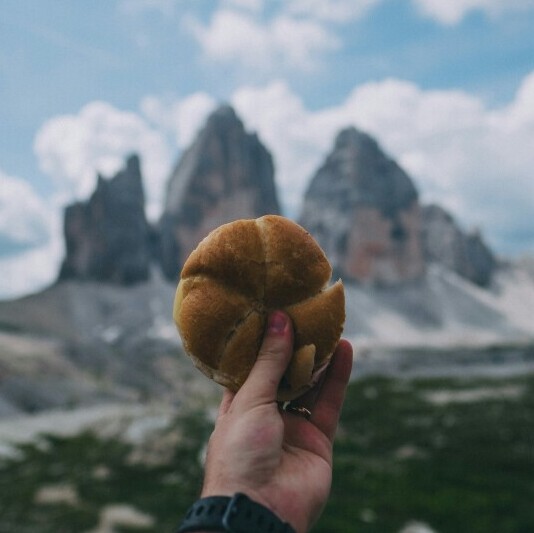Staying fueled and hydrated on a hike matters a lot more than people realise. Packing the right snacks and meals helps keep energy levels steady, supports your body’s recovery, and just makes the whole experience way more enjoyable. Whether you’re out for a quick afternoon wander or pushing through a multiday trek, your food choices can be the difference between slogging along and actually enjoying those views. Over the years, I’ve sampled everything from last-minute petrol station snacks to carefully weighed meal kits, so I’ve seen what works and what’s just unnecessary weight in your pack.

Nutritional Requirements for Hiking
Getting nutrition right starts with matching your food to the type of hike you’re doing. A stroll on a flat trail burns far fewer calories than scrambling up steep mountain passes for hours. When I was just starting out, I underestimated how much extra energy even a moderate trail could need. Now, I always plan for a bit more than I think I’ll use. In fact, usually a lot more!
Calorie Needs By Hike Difficulty
Short day hikes might only require an extra snack or two, but longer treks can burn upwards of 3,000–5,000 calories a day. The intensity, temperature, and how much weight you’re hauling all make a difference. A safe general rule? Bring at least 200–250 calories per hour for moderate hiking—if you tend to keep up a quick pace or tackle tough terrain, bump it up closer to 300 calories each hour. It’s always better to pack a little extra than risk running out halfway through your hike.
Carbs, Protein, and Fats for Endurance
Your body runs best on a mix of carbs for quick energy, healthy fats for longer-lasting fuel, and protein for muscle support and repair. My go-to hiking snacks are often carb-heavy—dried fruits, crackers, multigrain pretzels—but I always add nut butters or a handful of nuts for that extended energy, plus some jerky or a protein bar for post-hike recovery. Mixing types of fuel helps me avoid big energy crashes on the trail.
Electrolytes and Hydration
Sodium, potassium, and other electrolytes are easy to overlook, especially on hot, sweaty days. These minerals help prevent muscle cramps and keep your stamina up. Salty snacks or adding electrolyte tablets to water have saved me more than once—if you’ll be sweating a lot or hiking high up, don’t skip this step. Staying hydrated is about keeping water and salts in balance, not just guzzling water.
Types of Food to Pack
Every ounce you pack counts, so I always look for food that combines being lightweight, high energy, and easy to eat when you’re on the move. Taste matters, too! You’ll be happier if you actually want to eat your snacks. Here are some reliable options I reach for again and again:
- Lightweight, High Energy Snacks: Trail mix, granola bars, meat, nut butter packets, and chocolate (if it won’t melt) all fit the bill. They’re packed with calories and stand up well to bumps and slings in your pack.
- Easy to Eat Foods During Movement: Foods you can eat one-handed or without stopping are a real gamechanger. Squeeze pouches, energy gels like GU, energy chews, and dried fruit don’t need much prep and keep you moving. Honey-roasted cashews are my favourite.
- Pre-prepared Meals vs. Cook-on-Site: Overnight hikes call for at least one hot meal—usually something you can prep by adding boiling water, like instant rice, ready-to-eat chili, or ramen packets. Some folks prefer carrying fresh ingredients and really cooking, but I stick to dehydrated meals to save time and weight, even if they’re a bit pricier.
- Dehydrated and Freeze-dried Meals: Brands like Expedition Foods and Summit to Eat have lots of options. I grab these for multiday hikes since they’re super light, filling, and just require hot water.
Hydration Strategy
First of all a confession… I seldom carry water when starting on a hike in Scotland. There’s generally so much of it everywhere that I just fill up an empty plastic bottle when I need it. In 30 years I’ve never had a problem with dodgy stomachs or the like. Being sensible, though, means that I only take water from running sources. Also, I always try a little first to make sure there are no nasty tastes.
- How Much Water to consume: The recommended starting point is at least half a litre (about 17 ounces) per hour of moderate hiking. If it’s hot or the hike is especially tough, I double that. I also keep an “emergency sip” in reserve for longer dry stretches.
- Water Filtration and Purification: If clean water isn’t always at hand. Lightweight filters are my go-tos—they’re quick and fit easily in a side pocket. Backup purification tablets don’t weigh much and provide a safety net. Bigger pump filters are good for groups, but a bit bulky for solo hikes.
- Electrolyte Tablets or Powders: These are good for flavor and important for mineral balance. Lemon, berry, or even plain tablets keep me interested in sipping water throughout those long miles.
Meal Planning & Portion Control
Planning meals in advance prevents running out or carrying too much. I’ve pulled together a few reliable strategies after a lot of trial and error:
- Day Hikes: Bring a small high energy snack for every hour out, and add an easy lunch (a tortilla with) plus an emergency bar. It makes all the difference when you’re hungrier than expected.
- Multiday Hikes: Plan every meal and snack. I set up little snack and meal bags for each day—that way, I don’t eat tomorrow’s food by accident!
- Portion Sizes: Single serving packs are great for portion control. I shoot for about 100g (3.5 oz) of dry dinner base per meal—like couscous, pasta, or rice—then add a protein or sauce.
- Varying Snacks: Switching between salty and sweet helps avoid taste fatigue and ensures I keep eating enough. I tuck different snacks in my hipbelt pockets for convenience.
Food Safety & Storage
Keeping your food safe and animal-proof matters for everyone’s safety, and it helps your food last longer too. Here’s how I handle it:
- Preventing Spoilage: Choose less perishable options. In hot weather, I leave cheese, fresh meats, and dairy at home. On cold trips, you can bring foods that need cool, but keep them packed tight to avoid freezing solid.
- Protecting Food from Wildlife: Animals, especially rodents, sniff out food fast. These little scamps can poke holes in your lunch, so double up zip bags.
- Managing Odors: Double-bag strong-smelling foods, and always pack out wrappers. This minimizes animal interest and keeps you in line with Leave No Trace principles.
Cooking & Preparation Methods
I usually use a mix of hot meals and simple snacks, but you can totally cover your nutrition with just no-cook foods if needed:
- No-Cook Foods: Tuna packets, tortillas, nut butters, hard salami, and cold-soaked couscous or oats are all good stove-free options. I use these for lightweight or short trips, or in hot weather when I don’t want to cook.
- Hot Meal Options: A mini camp stove (like Jetboil or MSR PocketRocket) and one pot handle most hot food needs. Fuel canisters weigh little, but check local rules—some places restrict their use.
- Utensils and Cookware: One sturdy spoon or spork, a small pot, and a mug will get you through almost any trail meal. Collapsible silicone bowls and cups shrink your packing size even more.
Dietary Considerations
Food restrictions shouldn’t mean fewer good options. Hikers with dietary needs still have plenty to choose from:
- Vegetarian/Vegan: Dehydrated bean mixes, lentils, nut butters, freeze-dried veggies, and many ready meal pouches work great. Check for plant-based backpacking meals as these are more common now.
- Gluten-free: There are plenty of gluten-free granola bars, tortillas, and rice cakes that travel well.
- Allergy-Friendly: Always check ingredient lists carefully. For severe allergies, carry an epinephrine injector and separate packaging.
- High Protein: Protein bars, jerky (including plant-based types), hard cheeses, nut snacks—they all boost muscle repair after harder days.
Emergency & Backup Food
I always add one spare meal and a couple of sweet snacks. Anything can happen out there—extra food is peace of mind. Shelf-stable, high-calorie snacks like energy bars, an instant oatmeal pack, or a pouch of nut butter take up very little space but can be a lifeline.
- Long Lasting & Compact: Protein bars, peanut butter packets, vacuum-sealed tuna or salmon—they last for months and won’t get crushed or ruined at the bottom of your pack.
Sustainability & Waste Management
Reducing disposable packaging means you pack out less, which keeps trails cleaner and protects wild spaces. Here’s what works for me:
- Minimize Packaging: Prepacking snacks in reusable zip bags or silicone pouches cuts bulk and trash. Avoiding single-use plastic as much as possible also reduces your footprint.
- Follow Leave No Trace: All food waste, wrappers, and even things like fruit peels get packed out. Microtrash builds up fast. Stick to Leave No Trace (USDA resource) to keep wild places wild.
Weather & Altitude Considerations
Where and when you hike affects both your appetite and how your food holds up on the trail. Consider these tips:
- Heat: Bring foods that won’t melt or spoil—powdered drink mixes, tortillas, dried fruits are better than chocolate or soft cheese on hot days.
- Cold: Dense items like cheese, nuts, and hard sausages can freeze. Tuck them close to your body until you want to eat.
- Altitude: People can lose appetite above 4,000 feet. Smaller, snack-style foods are easier to eat, and salty snacks plus warm drinks are often more appealing up high.
Frequently Asked Questions
Here are a few questions I hear all the time from hiking friends and folks new to the trails:
Question: How much food should I bring for a day hike?
Answer: A solid rule is about 250–300 calories per hour. It’s always safer to have a bit of extra rather than risk running empty. A backup snack gives peace of mind.
Question: Are there any foods I should totally avoid bringing?
Answer: Anything super perishable like milk, eggs, or soft cheeses goes bad fast, especially if it’s warm outside. Avoid strong-smelling foods—they can draw in wildlife.
Question: What’s the best way to pack out trash and food waste?
Answer: Carry a separate zip bag or dry sack for everything—wrappers, scraps, even used wipes. Don’t leave anything behind, even if it seems “natural.”
Dialing in trail nutrition just takes a little trial and error. Every hike gives you a chance to tweak what works best for your body and your favorite trails. With a little planning and the right snacks, you’ll have plenty of energy for every step and a more memorable adventure out in the wild.
